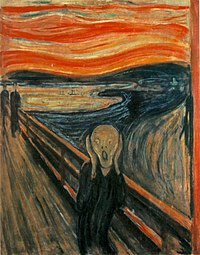
Photo from wikipedia
Cognitive theories of obsessive compulsive disorder (OCD) propose that obsessive beliefs bias individuals’ perception of OC-relevant threats, which in turn maintain OCD symptoms. However, no prior research has directly tested… Click to show full abstract
Cognitive theories of obsessive compulsive disorder (OCD) propose that obsessive beliefs bias individuals’ perception of OC-relevant threats, which in turn maintain OCD symptoms. However, no prior research has directly tested this mediational model in a clinical sample. The current study bridges this gap in the literature. Sixty adults with OCD completed a diagnostic interview, self-report questionnaires and a threat perception task. More specifically, participants rated the perceived threat associated with (a) OC-specific stimuli (e.g., toilet) that matched their most interfering symptom dimension (e.g., contamination) and (b) generally negative terms (e.g., pain). Results supported hypotheses, in that the threat associated with OC-specific—but not generally negative—terms significantly mediated the relationship between obsessive beliefs and the severity of participants’ most interfering OCD symptom dimension. Findings underscore the importance of targeting inflated perceptions of OC-specific threats in the treatment of OCD. Limitations and future directions are discussed.
Journal Title: Cognitive Therapy and Research
Year Published: 2019
Link to full text (if available)
Share on Social Media: Sign Up to like & get
recommendations!